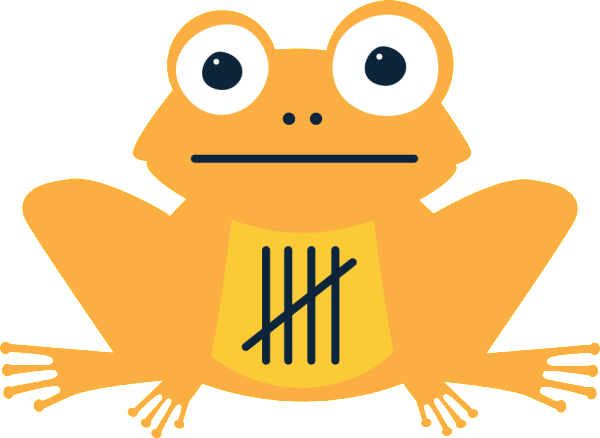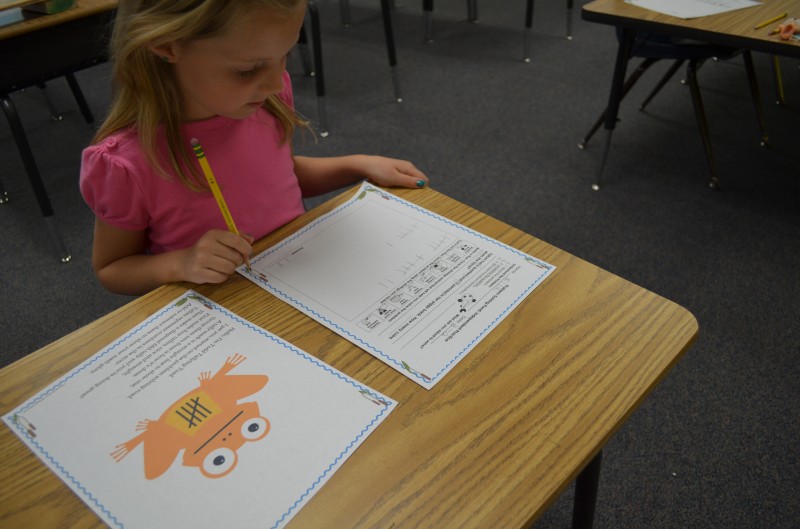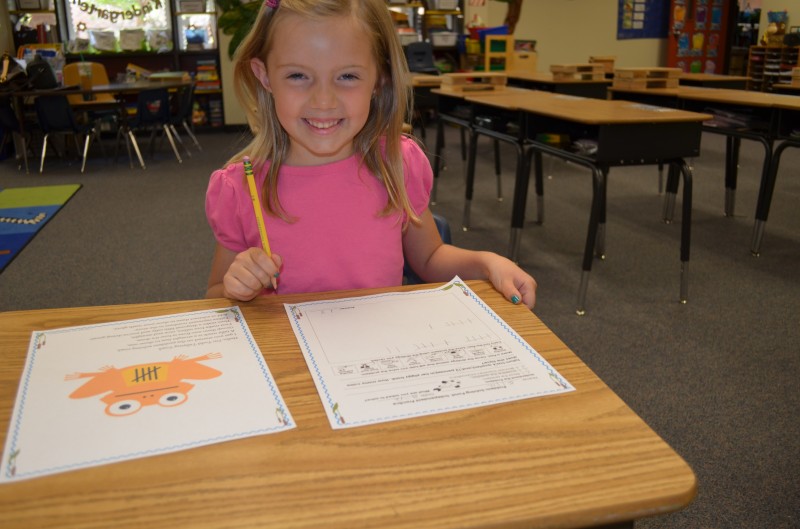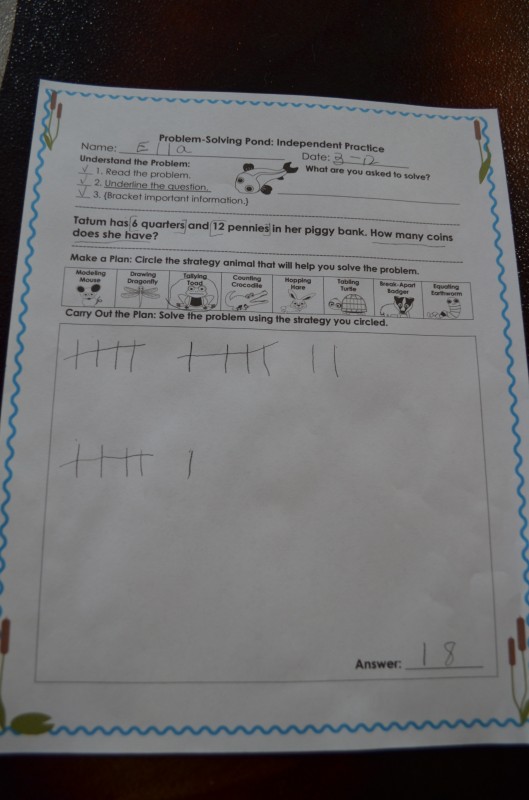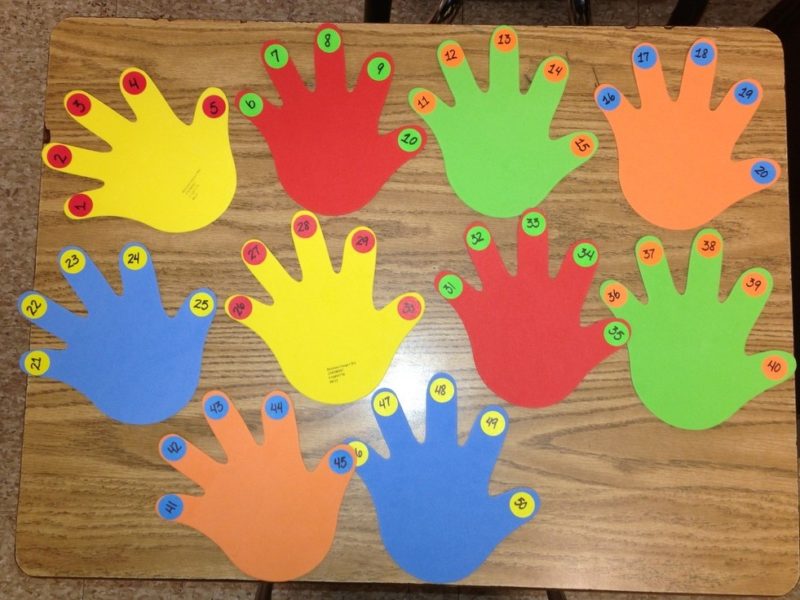Hello, I’m Tallying Toad.
I get you started on the problem-solving road.
A tally mark is a straight line to show one;
Group tallies into five is how it’s done.
First make four tallies, nice and straight;
Then make a diagonal fifth tally and you’re doing great!
Todd Tallying Toad is our newest animal in our Problem-Solving Pond: A Common Core Math Strategy Unit. The Problem-Solving Pond was created to help teachers overcome Common Core math challenges and employ problem-solving strategies with confidence and fidelity. Read more about Todd’s strategy below or download the complete unit here.
WHAT is tallying? Students use tally marks to show the numbers represented in the story problem.
WHY is tallying important? When students use the tally strategy, they learn to count and notate groups of 5, strengthening number sense in the process. Tallying is an easy, quick way to double-check solutions for kindergarten and first-grade students.
HOW do I teach tallying? Teach tallies in isolation first so that students become proficient making neat, organized tally marks. After proficiency is demonstrated, introduce tallying as a problem-solving strategy and teach students to apply within a mathematical context.
WHEN should I use tallying? This is an ideal strategy for beginning mathematicians who are learning to count and record numbers. Tallying is a great way to represent smaller numbers in story problems. Students get comfortable with tallies and will try to apply to larger numbers, making some teachers cringe. Refrain from discouraging use of tallies for larger numbers; students must independently develop understanding that tallying is not an efficient, effective strategy for story problems with larger numbers.
Helpful hints:
• Supply models and provide kinesthetic practice. Beginning mathematicians often lack dexterous fine motor skills, which can impede formation of neat, straight tally marks. Provide craft sticks, Wikki Sticks or pipe-cleaners (cut in half) and have students make a model of the tallies before drawing them on paper. Allow students to practice kinesthetically in salt or Jell-o trays or trace on bumpy paper. Students can also practice making tallies with Play-Doh.
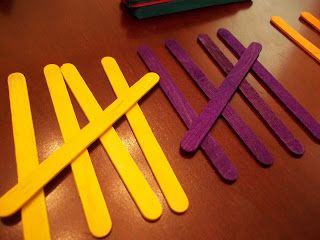 • Include visual support. As beginning mathematicians start to use tally strategy, they need visual support to ensure that tally marks are straight neatly organized into groups of 5.
• Include visual support. As beginning mathematicians start to use tally strategy, they need visual support to ensure that tally marks are straight neatly organized into groups of 5.
• Practice counting by 5’s. Some students struggle with skip counting and could benefit from repeated practice. Chanting 5’s while walking in line, calendar time, even clean-up time all serve as opportunities for fun skip counting practice.

